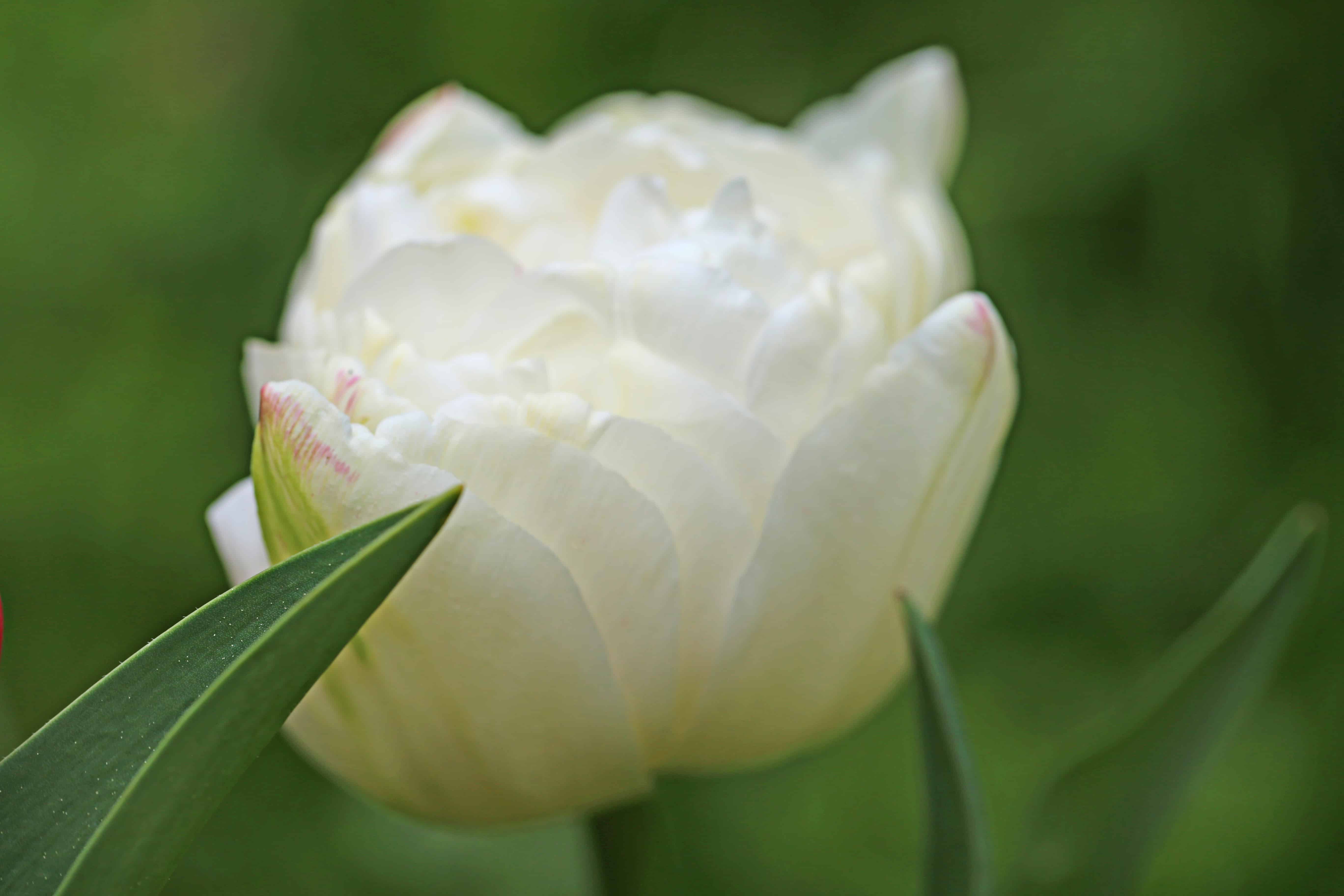Pure white tulips add a touch of refinement and sophistication to a spring garden. These blooms look great in a uniform arrangement or to contrast the vibrant rainbow of other tulip types.
If you’re looking to add a touch of class to your garden, you’ll love these nine types of white tulips.
The History of White Tulips
Though not as steeped in myths and legends as some other flowers, white tulips have a rich history and hold symbolic significance in different cultures. Their pristine beauty and gentle allure have made them a symbol of purity, innocence, and new beginnings.
Due to their association with purity and spiritual devotion, white tulips are popular gifts in religious ceremonies and rites. You’ll often see them at events such as baptisms and weddings, where their white petals represent the purity of the soul and the sacredness of the union. Their presence in these rituals adds an air of grace and reverence.
Beyond their religious symbolism, white tulips also possess a unique aesthetic appeal. While traditional tulip colors embrace pastels and vibrant shades, white tulips offer a clean and sophisticated alternative. Their elegant simplicity evokes a sense of purity and tranquility, making them an excellent choice for those who appreciate a minimalistic or refined atmosphere.
Historians can trace the significance of white tulips can back to the Ottoman Empire, where they were highly valued and sought after. Their pure white petals were considered a symbol of wealth and luxury. They were often displayed in grand gardens and palace grounds.
With this symbolism and history in mind, here are some stunning types of white tulips you can grow this spring.
Verona
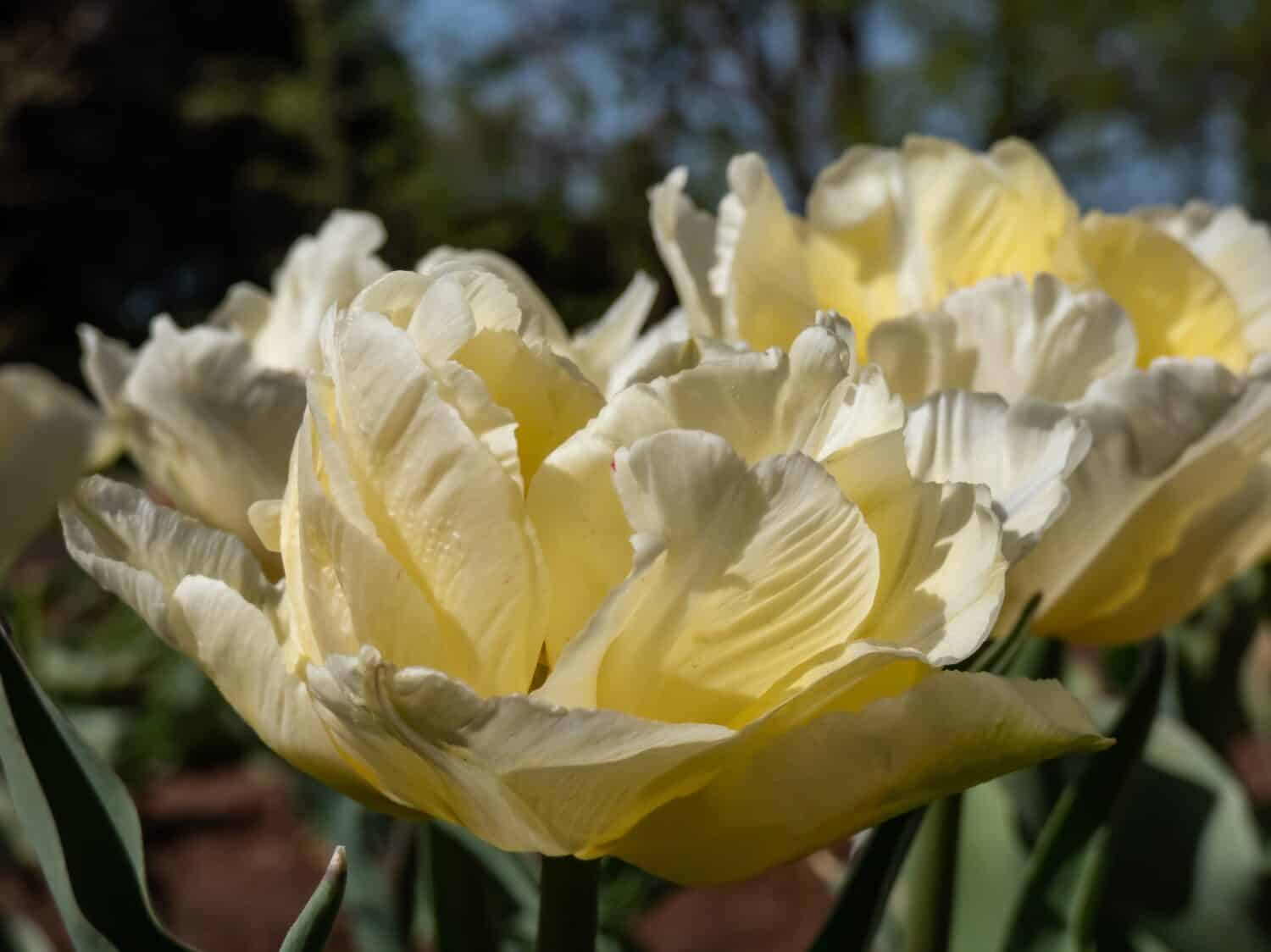
Verona tulips are lush and romantic.
©Kristine Rad/Shutterstock.com
Botanical Name: Tulipa ‘Verona’
Verona, named after the iconic setting of Shakespeare’s “Romeo and Juliet,” is a charming flower with lush cream-colored petals. What makes it even more enchanting is the delicate green or pale pink markings adorning its petals’ exterior, adding charm and elegance. When Verona blooms in your garden, it brings a sense of luxury and beauty to the surroundings.
Standing at 18 inches at full maturation, this early bloomer is known for its resilience against wind and rain. However, you should plant Verona in a sheltered area to ensure its blossoms thrive for as long as possible.
For optimal growth and to witness Verona’s true beauty, plant it in well-draining soil and full sunlight in USDA zones 3-8.
Purissima

Close-up of flowering Tulipa ‘Purissima’ tulips.
©Andrew Fletcher/Shutterstock.com
Botanical Name: Tulipa ‘Purissima’
Tulipa ‘Purissima’ is a stunning Fosteriana tulip variety with a color palette that combines pristine white with delicate hints of creamy yellow at the base. The flowers display a graceful cup shape with slightly reflexed petals. This bloom lives up to its name— a rough Spanish translation of “pure.”
Fosteriana tulips, also known as Emperor tulips, are characterized by their large flowers, strong stems, and early bloom time, making them a popular choice for early spring displays. They are known for their reliability and ability to naturalize, creating beautiful carpets of color year after year.
With proper care, this beauty will reach 16-18 inches tall. Plant this tulip in well-draining soil in an area that gets full sun exposure. Like many tulips, Purissima does best in USDA zones 3-8.
Snow Crystal

The Snow Crystal has unique double-fringed petals.
©Nataliia Suietska/Shutterstock.com
Botanical Name: Tulipa ‘Snow Crystal’
A rare combination of two types of white tulips, Snow Crystal is a double late tulip and a fringed tulip. This breathtaking tulip boasts pristine white petals that create a stunning display, resembling delicate snowflakes.
Snow Crystal has cup-shaped flowers with ruffled edges for a lush, dense appearance. Many petals have hints of green along the exterior, stretching upward from the stem.
This double late tulip is smaller than other tulips in this category, maxing out at 14 inches tall. Its heavy blossoms are sensitive to wind and rain, making it ideal for a wind-sheltered garden in USDA zones 3-8. Ensure the Snow Crystal tulip has ample exposure to the sun and well-draining soil.
Maureen
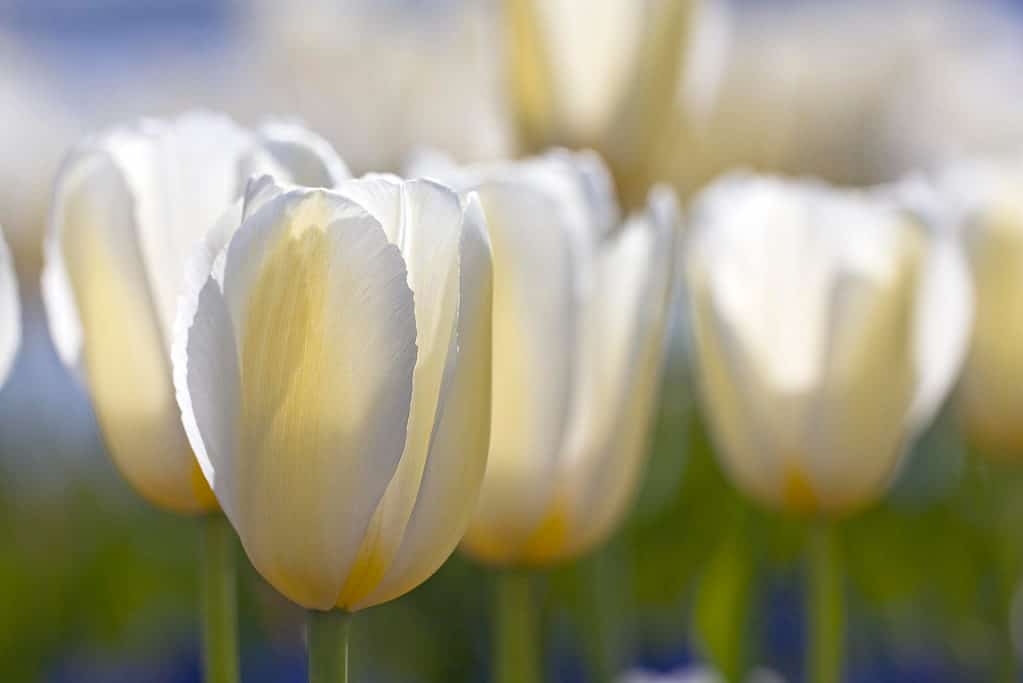
White Maureen Single Late Tulips in bloom
©imageBROKER.com/Shutterstock.com
Botanical Name: Tulipa ‘Maureen’
Maureen is a prized tulip among collectors, winning the prestigious RHS Award of Garden Merit. This single late tulip boasts the iconic tulip cup shape with elegant white petals curving to a soft point and a bright yellow center to attract pollinators.
Like many single late tulips, Maureen grows up to 24-28 inches tall with proper care. The long stems and refined aesthetic make this bloom perfect for cut flower arrangements.
Plant Tulipa ‘Maureen’ in soil with sufficient drainage to keep its roots healthy. This bloom prefers full sunlight in USDA zones 3-8.
Pim Fortuyn
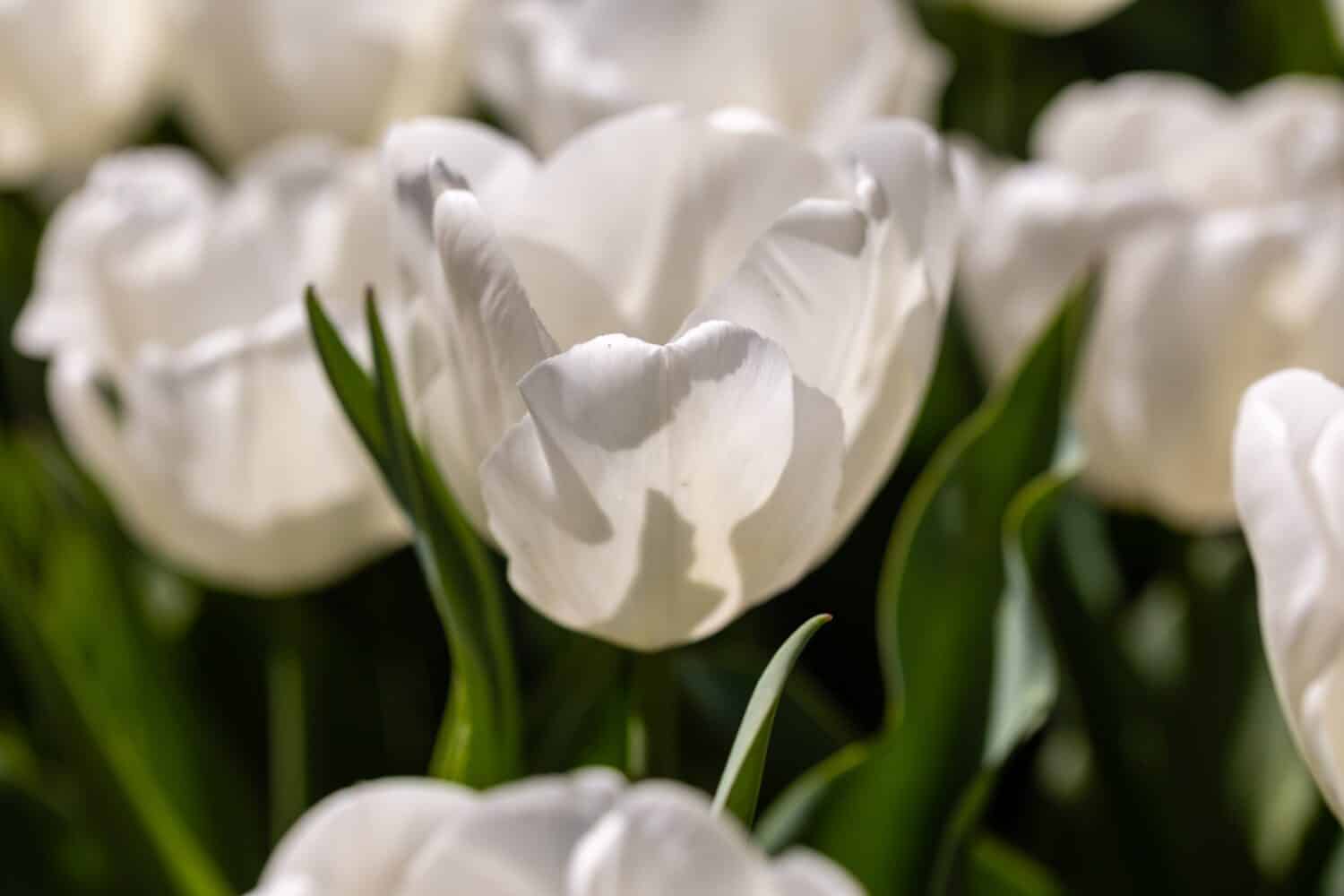
‘Pim Fortuyn’ grows up to 20 inches tall.
©Jose Luis Vega/Shutterstock.com
Botanical Name: Tulipa ‘Pim Fortuyn’
This stunning white tulip was named after Dutch political leader Pim Fortuyn. Pim Fortuyn was a controversial figure in history. His death in 2002 marked the political assassination to occur in the Netherlands since the 1670s.
Despite the upsetting historical connotations, Tulipa ‘Pim Fortuyn’ is a beautiful bloom. Pim Fortuyn has delicate white petals with softly pointed edges showcasing the iconic tulip shape.
Tulipa ‘Pim Fortuyn’ is a Triumph tulip. These tulips typically have strong stems and bloom in the mid to late spring. With proper care, this lovely white tulip will grow up to 20 inches tall.
Plant Tulipa ‘Pim Fortuyn’ in USDA zones 3-8 in an area with full sun exposure. Like other tulips, this beautiful bloom prefers well-draining soil.
White Triumphator

As the name suggests, this tulip is truly triumphant in any garden or floral display.
©Bjoern Wylezich/Shutterstock.com
Botanical Name: Tulipa ‘White Triumphator’
Tulipa ‘White Triumphator’ is another winner of the Award of Garden Merit and one of the most prized types of white tulips among collectors. White Triumphator is a lily-flowered tulip, a group recognized by its resemblance to lilies.
White Triumphator has elegant white pointed petals with a slight curvature. Its petals are graced with subtle touches of creamy yellow, extending upward from the stem.
These incredible blooms reach up to 30 inches tall with proper care. They require full sunlight and a wind-sheltered area to thrive. Plant this showstopper in well-draining soil in USDA zones 3-8.
White Dream
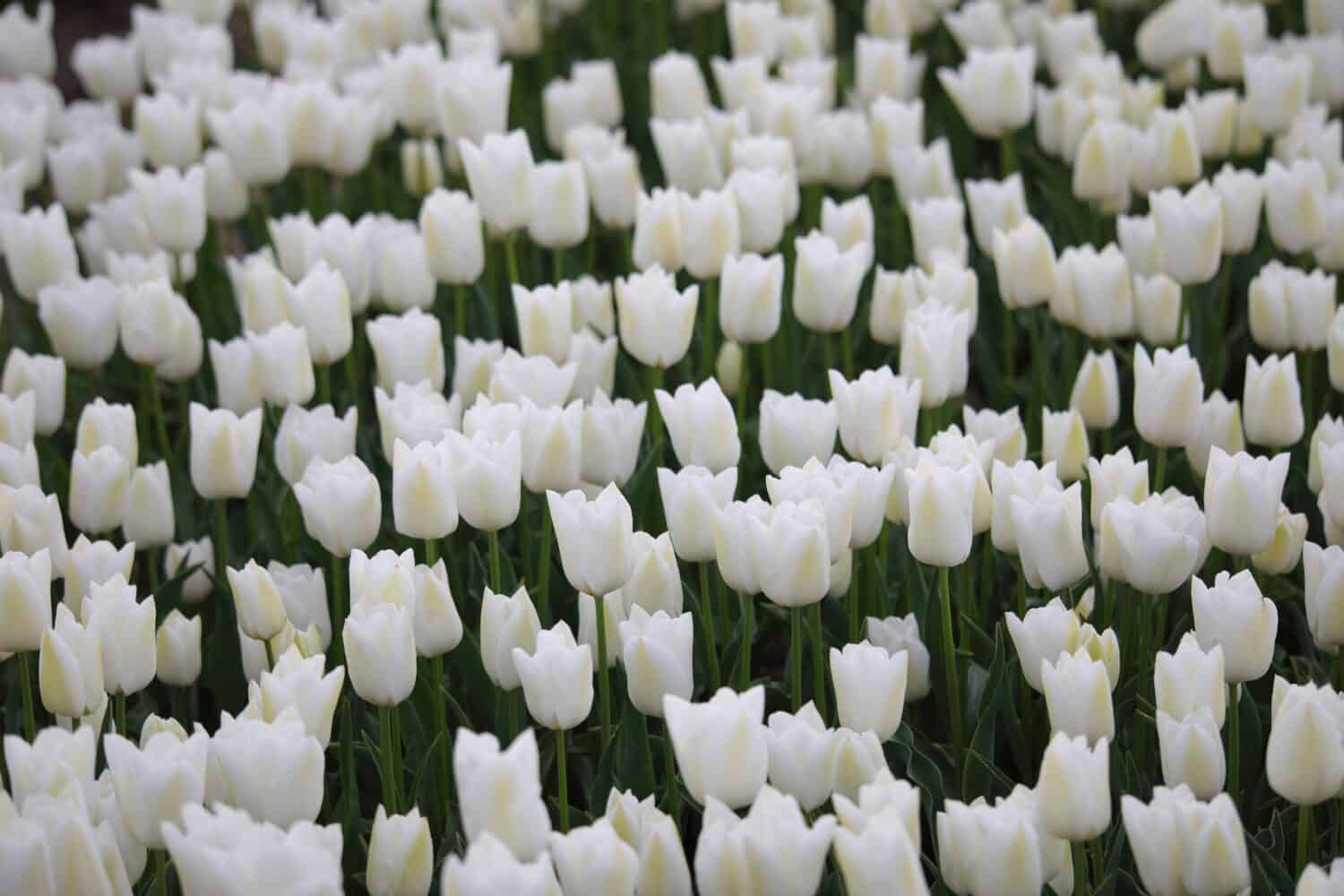
‘White Dream’ is a classic white tulip often featured at holidays and events.
©Ole Schoener/Shutterstock.com
Botanical Name: Tulipa ‘White Dream’
Tulipa ‘White Dream’ is a classic white tulip, boasting the ballet slipper shape that fans out into a goblet formation in the sun. You’ll often see these tulips at religious events and holidays, such as Easter and baptisms.
White Dream has pure white petals with a creamy yellow center. A member of the Triumph tulip group, this flower reaches up to 18 inches tall. Its strong stem makes it ideal for cut flower arrangements. White Dream blooms in mid to late spring, depending on the climate.
Plant White Dream in soil with sufficient drainage for root health. Choose a plot with full sun in USDA zones 3-8 for this sophisticated tulip cultivar.
White Parrot

The White Parrot tulip is a showstopper.
©iStock.com/Laurent Gravier
Botanical Name: Tulipa ‘White Parrot’
The White Parrot tulip is perfect for the gardener who wants a dash of flamboyance and drama to offset the elegance and sophistication in their garden. With ruffled white petals and unique feathered edges, the White Parrot is the best of both worlds.
Parrot tulips are known for their showstopping feathery appearance. While many parrot varieties boast an array of bold colors, the White Parrot stays true to its name. However, many of these flowers get subtle green feathering along the outer petals, leading to confusion with the Viridiflora tulip type.
This one-of-a-kind tulip grows up to 20 inches tall in full sunlight and well-draining soil. Plant in a sheltered spot to offset their heavy blossom in USDA zones 3-8.
Mount Tacoma
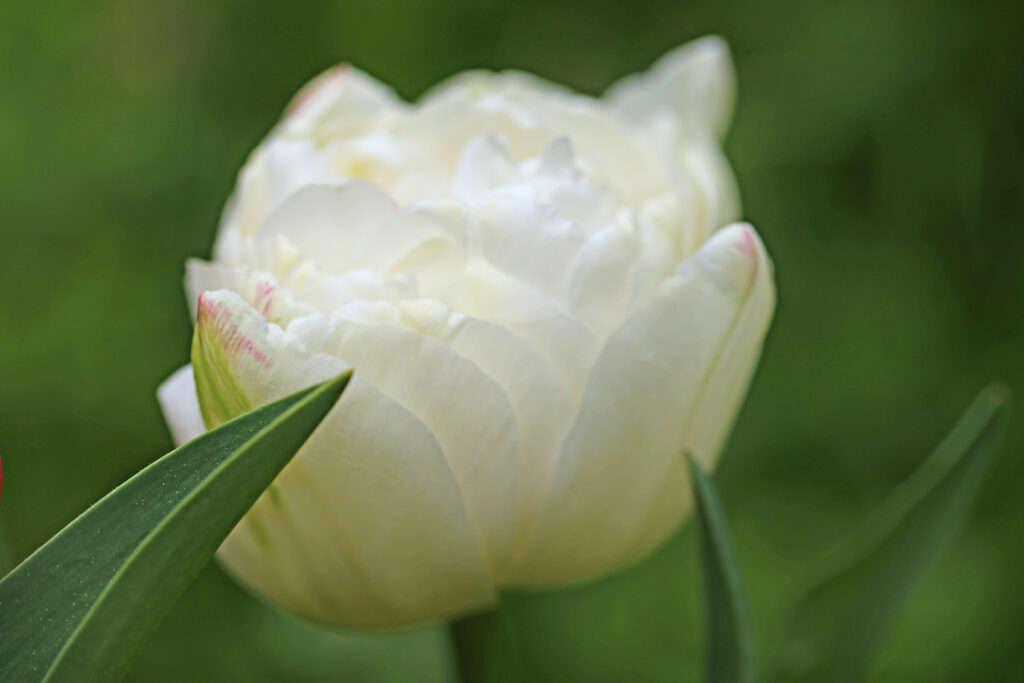
The Mount Tacoma tulip is lush and dense.
©Yul38885/Shutterstock.com
Botanical Name: Tulipa ‘Mount Tacoma’
Mount Tacoma is a highly favored double tulip variety that tulip collectors adore. It blooms in the late spring, showcasing its lush, peony-like appearance. The petals of this showstopper are a pure, snow-white color with delicate hints of ivory along the center.
When properly cared for, Mount Tacoma can reach a height of up to 20 inches. As with many double tulips, Mount Tacoma’s heavy blooms are sensitive to wind and rain. Plant it in a wind-sheltered area to protect it from the elements.
Mount Tacoma thrives best in full sunlight. Additionally, it prefers soil with suitable drainage to prevent waterlogging. These conditions are ideal for its growth and development in USDA zones 3-8.
Thank you for reading! Have some feedback for us? Contact the AZ Animals editorial team.

